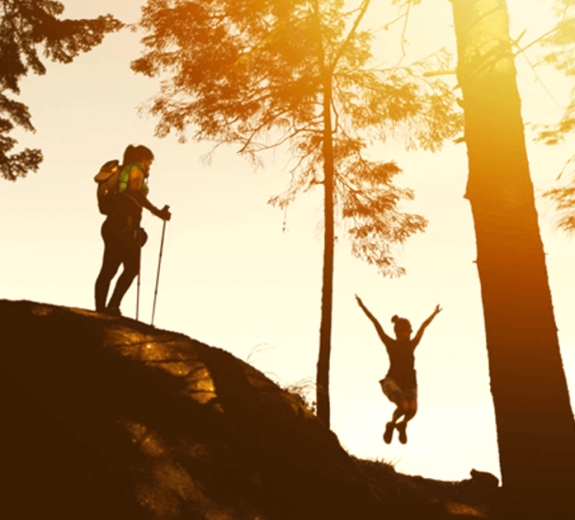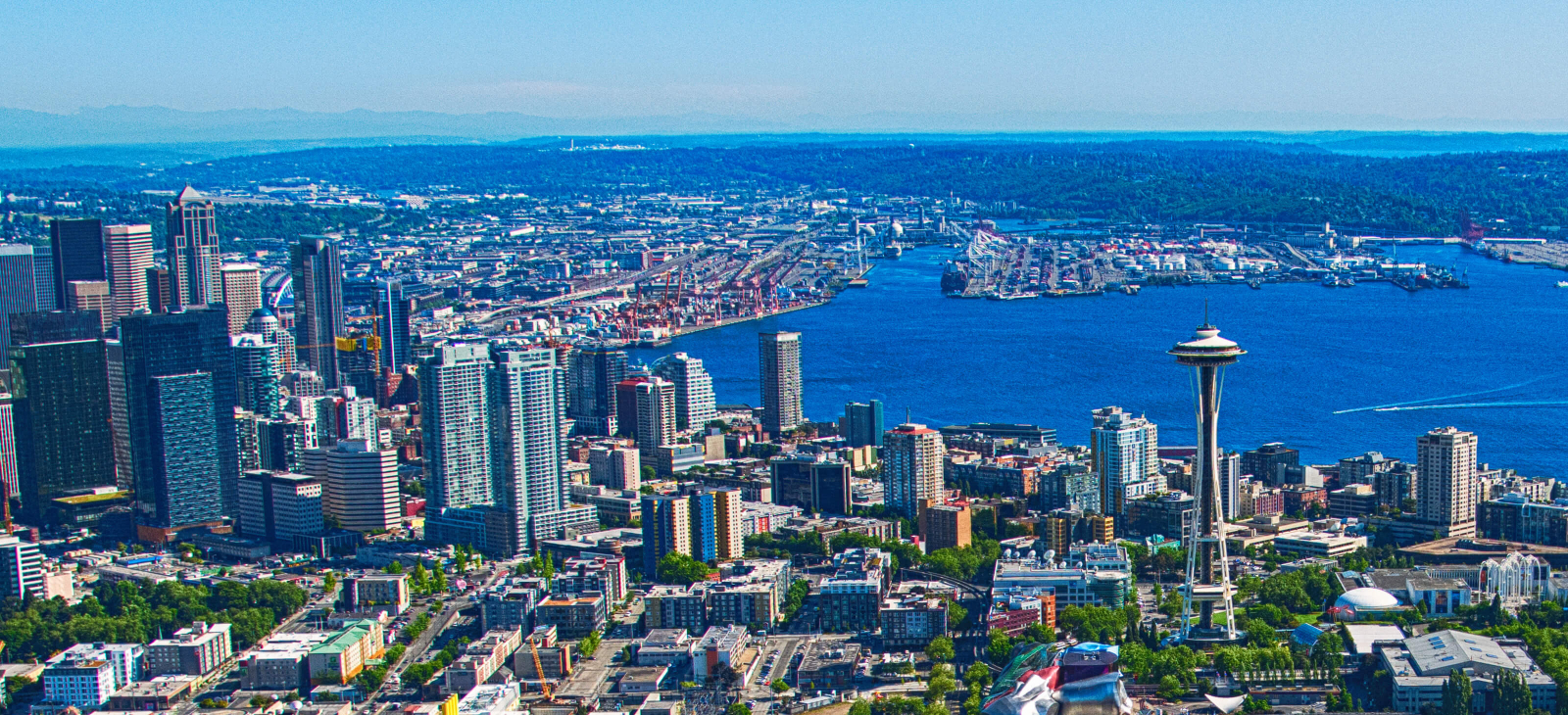
The Pacific Northwest's Best Places to Get Outside with an Autoimmune Disease
If you live in the Pacific Northwest, chances are you’ve been counting down the months to the region’s best-kept secret: the Seattle summer. This is the prime time to get outside and experience our local parks, beaches and campsites. With so many to choose from, it can be tricky to find the best option if you live with an autoimmune disease, like type 1 diabetes, rheumatoid arthritis and Crohn’s and colitis. Below, we’ve compiled our top destinations alongside some tips and tricks to make your adventure more comfortable.

A Day Around Town
Seattle is home to over 485 parks, making it is easy to find one that is accessible by bus, lightrail, tram, car, or on foot. Not sure which way is the best? You can always check your route on King County Trip Planner. Here are some popular picks:
Washington Park Arboretum: Nestled between the Madison Valley and Montlake neighborhoods, this shady park is an oasis on a hot day. Heat can cause multiple sclerosis and lupus patients to experience a temporary worsening of symptoms. So if high temperatures cause your symptoms to flare, the arboretum is an excellent place to take a self-guided tour. As of 2018, the arboretum features an updated paved pathway making the park more accessible than ever before for those using wheelchairs or other mobility aids. With a road running through it, the scenic views make for a lovely weekend drive.
Kerry Park: If you have seen a photo of the iconic Seattle skyline, chances are you have seen the sights from Kerry Park. This location boasts a stunning, panoramic view of our changing downtown and Mount Rainier. The park is very sunny and offers limited shade. So, if you live with lupus or scleroderma and experience light sensitivities, be sure to bring sunblock and a cover-up. However, all this sun may present benefits for inflammatory bowel disease prevention. According to a recent study, up to 30 minutes of sunshine a day may reduce children’s risk of developing the illness. And, if you find yourself wanting to seek shelter from the sun, a place to rest or a bathroom try one of the many restaurants and cafes a few blocks north of the park.
Seattle Center: In the shadow of the Space Needle, the Seattle Center campus offers something for everyone and the flat terrain makes this site accessible for individuals who use a mobility aid. A favorite attraction is the International Fountain. A remnant of the World’s Fair, the fountain was restored to its original glory in 1995. Today it is one of the most beloved places to beat the heat. Feeling hungry? Have a picnic on the Center’s lawn after stopping by The Armory, where you’ll also find the public restrooms. If the sun is too strong, take a shade break in the Chihuly Garden & Glass Museum, the Museum of Pop Culture (MoPOP), or the Pacific Science Center (PacSci). The Tropical Butterfly House at PacSci is a can’t-miss!

Beach Side
Seattle’s proximity to the Salish Sea and Puget Sound means there is no shortage of beachfronts to explore. Some local favorites follow
Seward Park: Situated just south of the city, Seward Park offers 300 acres of forestland and fresh water beach access accented by a 2.4 mile paved cycling route—suitable for wheelchair-users—that loops around the perimeter of the park. This forest-in-a-city offers ample parking, shade-covered trails and public restrooms. If you use a mobility aid, take extra caution as you hop off the paved route to head to the center of the park. The interior trails are unpaved and can quickly change elevation – but the view of Mount Rainier is hard to beat!
Alki Beach: Alki Beach Park, located in West Seattle, is reminiscent of the quintessential beach town. This sandy park is known for its wheelchair-friendly beachside path, volleyball courts, rollerbladers, seaside restaurants and 360 views of Puget Sound. Some autoimmune diseases cause light sensitivity, and you won’t find many trees here. So, to keep yourself safe from the sun we recommend applying sunscreen every 40 to 80 minutes. Ready to get out on the water? The West Seattle Water Taxi from Coleman Dock to Seacrest Dock is an adventurous alternative to the traditional commute.
Olympic Sculpture Park: The Sculpture Park connects to Myrtle Edwards and Centennial Parks, offering 1.25 miles of wheelchair accessible-paved paths. You’ll also find shaded greenspace to rest beneath in case your autoimmune disease causes fatigue. While taking a moment, this park offers stunning views of the Elliott Bay, the Olympic Mountains and public art maintained by the Seattle Art Museum, or SAM. Curious to see the rest of the museum’s collection? The SAM offers accessibility support services including wheelchair loans, sign-language accessible public tours, and Art Beyond Site tours for those with low or no vision. Contact the SAM via phone or email to learn more about these services.

Camp Out
Whether you travel west towards the Olympic Mountains, north to the Canadian border, or stay local, you are sure to find something special. These locations keep many nature-seekers coming back year after year.
Lake Crescent: If you want to escape the city, try Lake Crescent on the Olympic Peninsula. The fastest route starts with a 35-minute ferry ride from downtown Seattle to Bainbridge Island, followed by a two and a half hour drive. Visitors to the glacially-carved lake will find boat launches, swimming areas, 87 campsites (one of which is wheelchair accessible), picnic spots, hiking trails and deep blue water nestled between mountains. If you experience fatigue, heat and light sensitivity, this location has many trees and indoor lodging to accommodate your needs. Since you’ll be farther from home, it’s best to stock up on snacks and supplies before you hit the road – particularly if you live with type 1 diabetes.
Bainbridge Island: If you prefer to stay closer to Seattle, look no further than Bainbridge Island. This location offers the opportunity to take a break from urban life without the risk of being in a remote area in case your symptoms flare up. The charming downtown has a variety of shops and restaurants, as well as a local Saturday farmers market with plenty of benches to pause for a rest if needed. For the outdoors-lover, there are 17 acres of vehicle-accessible beachfront camping and the Grand Forest, a 240-acre woodland known for its trail running routes. Locals tip: Hidden inside the Bainbridge Gardens nursery is the New Rose Café — the perfect spot for a Sunday brunch after spending a night in the tent.
Your backyard: Aches and pains can be common for people with an autoimmune disease like rheumatoid arthritis or multiple sclerosis. Instead of getting out into the wilderness, bring the outdoors to you and throw a backyard glamping party. A glamorous getaway is the best excuse to have friends over, get dressed up in your finest dress or tie and live the posh life while enjoying the best that camping has to offer. To transform your space into an outdoor lounge, try draping white sheets to make a canopy, arrange a pile of pillows and add accents with twinkling string lights. In need of inspiration? Check out this Today article for easy tips to set the scene. The best part of a home-based vacation is that although living with an autoimmune illness may make it more difficult to get outdoors; it doesn’t have to keep you from making memories with friends and family.
Wildfires and Air Quality
This season brings heat and sunshine, but it also carries the risk of wildfires in eastern Washington and British Columbia – which can affect local air quality. Research suggests air pollution can worsen symptoms for those living with an autoimmune disease — like lupus, arthritis, multiple sclerosis, and Hashimoto’s thyroiditis.
Regardless of the summer activity, it’s important to keep yourself safe and check conditions before leaving your home. Washington State Department of Ecology’s Air Monitoring Network maintains up-to-date information on air quality and monitoring sites.
Any favorite destinations that you don't see above? Let us know in the comments below!
The information provided in this post should not be taken as a substitute for professional medical advice. Always check in with your doctor before heading out on a trip to make sure you are following the right precautions and planning according to your health needs.
Immuno-what? Hear the latest from BRI
Keep up to date on our latest research, new clinical trials and exciting publications.


